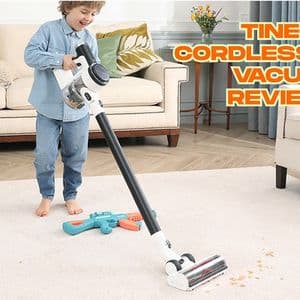Why Comparing Vacuum Cleaners Matters
Let’s face it—no one wants to waste money on a vacuum that doesn't get the job done. Whether you're dealing with pet hair, thick carpets, or hardwood floors, different vacuum cleaners offer different features, suction power, and usability.
Not all vacuums are created equal. Some are better for allergies. Others are lighter and more maneuverable. Still others are optimized for deep cleaning high-pile carpets. That’s why a thoughtful comparison matters.
Major Vacuum Cleaner Types
Before comparing models, it helps to understand the basic categories:
Upright Vacuums
These are the traditional full-sized vacuums most people are familiar with. Uprights typically offer strong suction and are especially good for large carpeted areas.
Pros:
-
Powerful suction
-
Wide cleaning path
-
Often includes bag or bagless options
Cons:
-
Heavier than other types
-
Less flexible in tight spaces
Canister Vacuums
Canisters separate the motor and dustbin from the hose and cleaning head. This design makes them versatile, especially for stairs and under furniture.
Pros:
-
Better maneuverability
-
Ideal for hard-to-reach spots
-
Quieter operation
Cons:
-
Bulky and harder to store
-
Hose management can be awkward
Stick Vacuums
Lightweight and easy to use, stick vacuums are great for quick cleanups. They often come in cordless models, making them a go-to choice for convenience.
Pros:
-
Easy to handle and store
-
Cordless options are portable
-
Good for daily touch-ups
Cons:
-
Smaller dustbins
-
Less powerful suction
Handheld Vacuums
Best for spot cleaning, handheld vacuums are small and ideal for cars, upholstery, and tight corners.
Pros:
-
Compact and portable
-
Quick cleanup tool
Cons:
-
Limited battery life
-
Not for full-home cleaning
Robot Vacuums
These smart devices clean floors automatically and work well in low-traffic areas. They’re popular for maintaining cleanliness between deep cleans.
Pros:
-
Hands-free operation
-
Good for maintenance cleaning
Cons:
-
Can miss spots
-
Expensive for basic models
Key Features to Compare
Once you've narrowed down the type, it’s time to dig deeper. Comparing features will help you decide which vacuum is best for your lifestyle.
Suction Power
Suction is one of the most critical aspects of a vacuum. Measured in air watts or kilopascals, stronger suction generally equals better performance, especially on carpets.
Watch for: Suction consistency over time—some vacuums lose power as their dustbin fills.
Filtration System
If you have allergies, consider a vacuum with a HEPA filter. These filters trap microscopic particles like pollen, dust mites, and pet dander.
Dustbin or Bag Capacity
Larger homes may require vacuums with bigger dustbins or bags to reduce emptying frequency. Bagged models are typically better at containing dust, while bagless ones save money on replacements.
Battery Life (for Cordless Models)
Cordless stick vacuums, including popular Dyson cordless hoovers, vary widely in battery life. Some last just 20 minutes, while others can clean an entire home on a single charge.
Attachments and Tools
Consider what accessories are included—crevice tools, upholstery brushes, and motorized heads can make a big difference for specific tasks.
Floor Types Matter
Another critical factor when you compare vacuum cleaner models is your home’s flooring. Some vacuums work best on carpets, others on hardwood or tile.
-
Carpeted floors: Look for vacuums with adjustable brush rolls or high suction.
-
Hard floors: Models with soft brush heads prevent scratching and improve debris pickup.
-
Mixed flooring: Multi-surface vacuums with automatic head adjustments are ideal.
Weight and Maneuverability
If you have stairs, multiple levels, or limited mobility, a lightweight vacuum is more than a convenience—it’s essential. Stick vacuums are often the lightest, while canisters offer balance between power and portability.
Pro tip: Try maneuvering the vacuum in-store if possible to get a sense of how it handles.
Noise Level
Some vacuums can be surprisingly loud, which can be an issue in small apartments or shared living spaces. Check decibel ratings if noise is a concern—canister vacuums and high-end models often operate more quietly.
Durability and Maintenance
Like any appliance, vacuums vary in build quality. Frequent filter replacements, hard-to-clean components, or weak hoses can affect long-term satisfaction. Reading a vacuum dyson review, for example, can reveal insights into longevity and maintenance needs.
Price vs. Value
While it's tempting to go for the cheapest option, it may not always provide the best value. More expensive vacuums often offer stronger suction, longer warranties, and better customer support. Still, it's possible to find budget-friendly models with solid performance.
Comparing Vacuums: Side-by-Side
Here’s a quick breakdown of how different vacuum types stack up:
| Feature | Upright | Canister | Stick | Handheld | Robot |
|---|---|---|---|---|---|
| Suction Power | High | High | Medium | Low to Medium | Low to Medium |
| Weight | Heavy | Medium | Light | Very Light | Light |
| Best For | Carpets | All surfaces | Quick cleanups | Spot cleaning | Maintenance |
| Storage | Bulky | Bulky | Compact | Very Compact | Very Compact |
| Noise Level | Medium-High | Low-Medium | Medium | Low | Low |
When to Replace Your Vacuum
No vacuum lasts forever. Here are a few signs it might be time for a new one:
-
Loss of suction that can’t be fixed
-
Frequent clogs or overheating
-
Cracked hoses or leaking dustbins
-
Unusual smells despite filter changes
Regular maintenance can extend a vacuum’s lifespan, but sometimes a replacement is simply more cost-effective.
Read more: What is Vacuum Cleaner
Final Thoughts
To compare vacuum cleaner options effectively, focus on how each type matches your household’s specific needs. Consider floor types, ease of use, noise, suction strength, and maintenance. By evaluating all these factors, you can make a more informed decision—and hopefully avoid buyer’s remorse.










